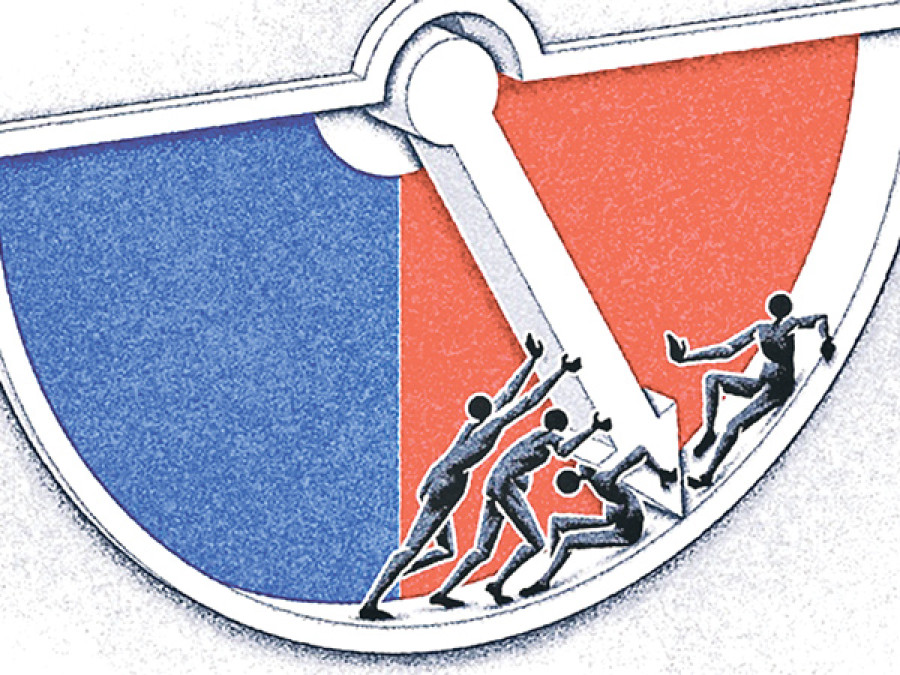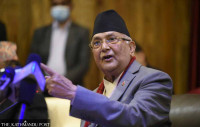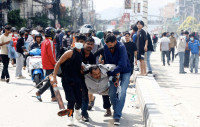Opinion
Highs and lows
Despite the anomalies in the constitution, we have no option but to implement it
Jainendra Jeevan
The new constitution of Nepal has finally been promulgated. Writing a constitution through an elected Constituent Assembly (CA) has never been an easy task anywhere in the world. Nepal is no exception. The constitution-making process has been easy only in those countries where the leaders have been wise enough to craft the statute, and where people had faith in those leaders. In India, it was BR Ambedkar and Jawaharlal Nehru who drafted the constitution which was widely debated in the CA. South Africa is another country which successfully drafted the constitution through a CA, largely due to its fatherly figure, the revolutionary-turned-liberal Nelson Mandela.
A mountain of a mess
Nepal did not have anything of that sort. Of the two categories of leaders, the first CA comprised of leaders who were already in power several times before, for example—late Girija Prasad Koirala. Generally speaking, most of them were intellectual lightweights, poorly educated, inept and corrupt. The second category included firebrand revolutionaries like Baburam Bhattarai who were good at carrying out a bloody insurgency, but were miserably incompetent to run a democratic system that demanded a liberal attitude and insightfulness.
The second category tried to incorporate many so-called revolutionary agendas in the statute that were not only unwarranted but also detrimental to the long-term interest of the country. Granting special rights to a few selected communities (especially, to rule) and giving them autonomy to ‘compensate for the historical injustice inflicted on them’, changing the national flag, making conscription mandatory were, among others, some of their misguided propositions. Fortunately, they were rejected after heated debates. In close collaboration with the Madhes-centric and ethnocentric parties, the firebrand revolutionaries, however, fought tooth and nail, till recently, to federalise
the nation solely along ethnocentric lines. Federal states as insisted by them, based on, and named after, a single ethnic identity was a disastrous notion. In a hitherto unitary nation, despite its diversity, such federalisation would not only result in national disintegration but also ruin social harmony in a mosaic-like mixed ethnic demography that we have.
The first CA was dissolved without promulgating a constitution, mainly because of polarisation on the federalisation issue. It was only when Prachanda, the leader of the largest party of the ex-rebels UCPN (Maoist), realised the dangers of such federalisation, that his party decided to ally with the two largest moderate parties—Nepali Congress and the CPN-UML—and write the constitution.
However, the Madhes-centric and ethnocentric parties and activists are extremely unhappy with the constitution. Despite the formation of ‘Madhes’ province extending from Saptari to Parsa, the Madhesi parties have continued their violent agitations since the last one and half months. Rejecting all pleas and attempts to come to the negotiating table, they have not only escalated their protests but also decided to impose a blockade on Kathmandu. Recently, the Baburam Bhattarai faction of the UCPN (Maoist) seems to be ready to join their agitation too. Defying all protocols of diplomacy and norms of international relations, India—our closest neighbour and also, unfortunately, always a very powerful player in our internal politics—has overtly come out in their support. Though most of the countries have welcomed the constitution, New Delhi has not expressed its support.
Problems with implementation
It seems, therefore, that the implementation of the new constitution will be a far more uphill task than its making. As we have over 100 ethnic/caste groups, in the days to come, there will be more agitations for additional autonomous ethnic states—which cannot be fulfilled. Even among the pro-Madhes/pro-ethnocentric federal lobby, there are conflicting or overlapping claims with regard to territories and boundaries of the would-be states. Perennial inter-community conflict, therefore, seems to be in the offing. For example, the Madhesis along with the supporters of a Limbuwan and a Koch province, will be agitating to include the three eastern-most districts of the Tarai—Jhapa, Morang and Sunsari—in their proposed provinces.
In view of these controversies on the existing and prospective cartography of the proposed provinces, it has been decided that this task will be carried out by a Federal Commission. But, how will a commission be able to carve an acceptable-to-all map when the biggest three political parties which enjoyed 90 percent majority of the CA could not do it jointly? In fact, the problems in demarcating and naming of the federal states may in itself make the ‘federal’ constitution a non-starter.
Hybrid document
Federalism apart, the constitution has many flaws that make it extremely difficult to implement. As a result of the compromise reached between diverse groups with different ideologies, constituencies, history, culture and ethnicity, the constitution has become a hybrid document. To appease and pacify powerful secular and pro-Hindu state groups, secularism has a strange definition now. To accommodate the wishes of powerful communist/socialist lobby, the constitution has been declared to be ‘socialism-oriented’, whatever that means. However, the statute neither provides any definition of socialism nor a workable blueprint to realise socialism, a failed ideology of the 20th century.
Normally, in democratic constitutions, political and civil rights and, sometimes, even rights pertaining to social justice are enlisted as fundamental rights. And, those rights are re-enforced through writs issued by an independent and competent judiciary. But our constitution has included too many rights, many of which a poor and resource hungry nation like Nepal cannot deliver; for example compensation against environmental degradation. Such wish-lists of the political parties should have been included in the directive principles instead. At times, the constitution sounds more like the manifesto of political parties than a compact document of constitutionalism—populist, too long and boring.
Such shortcomings need to be rectified during the course of the implementation of the constitution. Despite the inconsistencies and anomalies there is no choice left for us other than to own and implement the statute; for, we cannot live in a constitutional vacuum forever. The first CA could not write a constitution in four years; and, given the aspirations and the presence of conflicting groups in the second CA, it was not possible to do any better. As good leaders make the implementation of even not-so-good constitutions smooth and successful, we need good leaders to sail the troubled waters of our constitutional exercise. This statute does have many good aspects as well, such as democracy, freedom, a host of fundamental rights, several arrangements of social justice and so on, besides flexible provisions for amendment. Let us hope that our future leaders will successfully implement the good aspects of the constitution while taking advantage of its flexibility and amending the difficult and undesirable articles of the statute.




 9.12°C Kathmandu
9.12°C Kathmandu










